Brief introduction to the idea and plan of expedition
Go is the substantial phenomenon with long history and huge geography. We know a little about that time, when Go began to spread over the continent. Where can the Go origins be found and what is the Go cradle?
Nowadays there are two main versions of Go origin. The first is that Go was invented in China, and the second is that Go came to China from the outside. I think that the truth lies between these two hypotheses. It is possible to assume that 4000-5000 years ago some people came to China from Siberia. They went across Mongolian steppes and Gobi to Tibet. The graves of European type people have been recently found in Tibet. We don’t know why they decided to go from the north to the south. But we can conclude that Chinese culture and civilization was not formed in isolation but in connection with other ancient civilizations.
Version of Russian Go and Strategy School is that Go game belongs to Indy-European civilization and is not purely Chinese. Therefore we can try to search Go origins not only in Chinese kingdom territory but by tracing the routes of people’s migration from Siberia to Central Asia. All the more, this region has been explored a little on this issue.
Thought the idea to start the expedition to Mongolia came to Igor Grishin quite meaningfully. He had previously set on more than 10 exploring trips to China, he collected unique Go sets and books, spoke with masters and historians. He made a shot of ancient Weiqi stones (6th century) in Shansi National Museum. He was very curious about that stones. They were pyramidal brown, beige and dark green not like usual modern-style stones. Why do they have such a strange shape and plural colors? How were the stones chosen for a Go set? Why were several sets made of animal bones? And how were those animals chosen?

Weiqi agate stones belonging to the Sui Dynasty (A.D. 589), excavated from the eastern suburbs of Xian. Photo by Igor Grishin (1999)
Igor Grishin suggests that in early times the game sets were formed not of usual stones, but of stones that can give man power. And when the stones were made of bones, the most aggressive, rare or powerful animals were chosen for it. The stones’ colors meant the confrontation of two elements: water and earth. Maybe for this reason stones of Ming dynasty (this set is in our school collection) are decorated with inhabitants of water and earth, and Japanese stones are made from shell (water) and slate (earth).
While planning the expedition we had a goal – to try to understand feelings, thoughts, imagination of the people, who lived there, to see nature and landscapes where people in ancient times invented the essence of the game. In a similar way we can understand feelings and thoughts of the citizens of old towns in Europe. Their architecture enables us to imagine what was on their mind.
Research and observation is the main but not the only part of the expedition. It included three missions. At first, it is a cultural-patriotic car expedition to places of battle glory to Halhin-Gol (Mongolia). This year is also the 65th anniversary of Victory in The Second World War. Russian Go and Strategy School is studying war history in connection with Go game, and is looking for strategic examples during the war. In 2009 Igor Grishin published his book “Soviet-German War Vocabulary” where Go problems illustrated historical events that happened during the war.
During the Russian part of the expedition Igor Grishin and other participants will visit the places of battles, war museums, meet with veterans, organize lectures on war historical and strategic problems and present books about Go and war history.
The second mission is to popularize Go game in Russia and to help people who want to spread Go in their cities. Never before the chief of Russian Go federation has visited so many cities and regions of our huge country. Many people want to meet Igor Grishin, because he is not only a successful Go organizer (his Go club for children in Moscow is the oldest), but he can also explain how to begin to study Go, how to find people, how to open clubs and sections or to organize a tournament, how to teach children and adults. Because of these multiple problems people in Russia are afraid to open new clubs and organize anything.
In every city (more than 25), Igor Grishin will meet with Go fans, organize lectures about Go game or connection of Go and strategy and about teaching or Go organizations, in several cities he will open his workshops about Strategic Go or presented his books. I hope this big program will really help a lot of Russians to understand that Go game is a useful, interesting, modern and deep art, and they will start studying Go with their families. Such expedition is really a great event in Russian Go life.
In Astrakhan (the capital of Russian Caspian sea region) Igor Grishin will take part in the interregional economic forum with his workshop. Now in Russia a lot of people want to study strategy, therefore forum organizers asked Igor to come to Astrakhan with workshop about Strategic Go.
The third mission is research on Go game origins and other studies about history and nature of western part of Mongolia. I think we learned something interesting about it when expedition returned to Moscow with a large report.
The final point of expedition in Mongolia will be a lake in Gobi which is the last part of an ancient sea. It is a special sacred place, and in this lake there is “whale” as local citizens named it. In ancient times people lived there because the lake had sweet water.
The total route of the expedition is marked on the map. The expedition will last for nearly 80 days. We chose the towns where we will stop according to people’s wishes. If there was anybody who wanted to meet the expedition, Igor agreed to visit this town. Therefore in every town there is a program of meetings or lectures and presentations.

There are 4 cars (8-9 persons) in the expedition team. The Ministry of foreign affairs of Russia and the Ministry of sport, tourism and youth politics of Russia support this expedition. Special thanks for Association of graduating students of Russian President’s program of skill (management) conversion.
The expedition’s journal
The 4-th of May. Ryazan. The expedition made the first stop in this old Russian town with 1000 years history. There was not any Go club in Ryazan. From time to time several people asked our Federation to help them to find somebody who can play Go. We answered that they must be the first Go players there. As the right way to find players is to open a club and to begin studying Go — other people will come to you. When we prepared for the expedition we had not got any requests for a lecture or a workshop. But several Go fans wanted to meet with Igor Grishin. Their leader is a teacher of Japanese language at Ryazan Government University. He is from Japan, living in Russia.
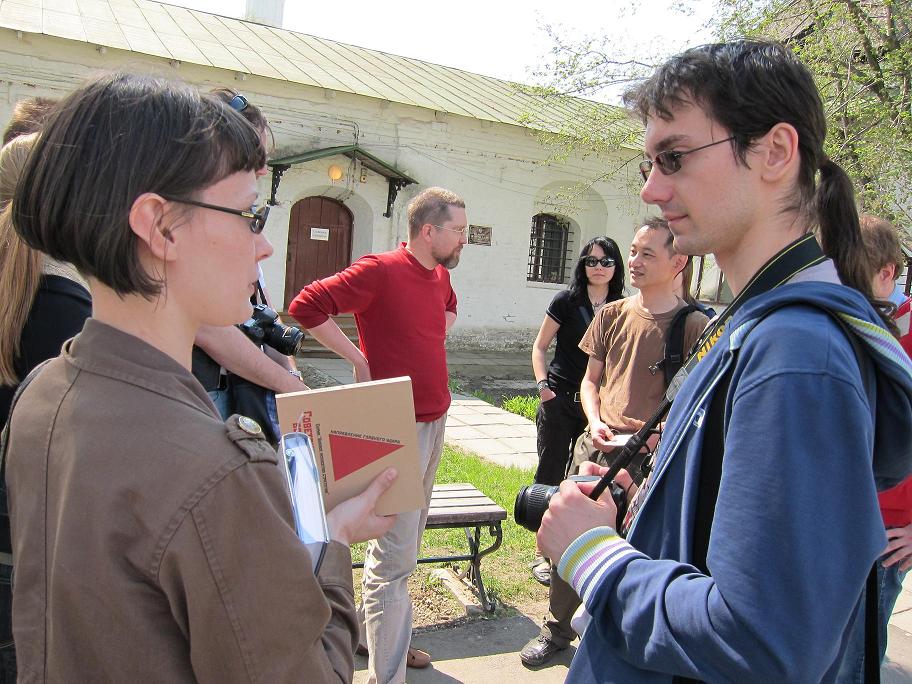
Meeting with Go lovers in Ryazan
The meeting was at Ryazan Kremlin (old fortress in the center of the town). Igor Grishin presented them our books. On the photo he presents Go book “Russian Teacher of Japanese Go”.
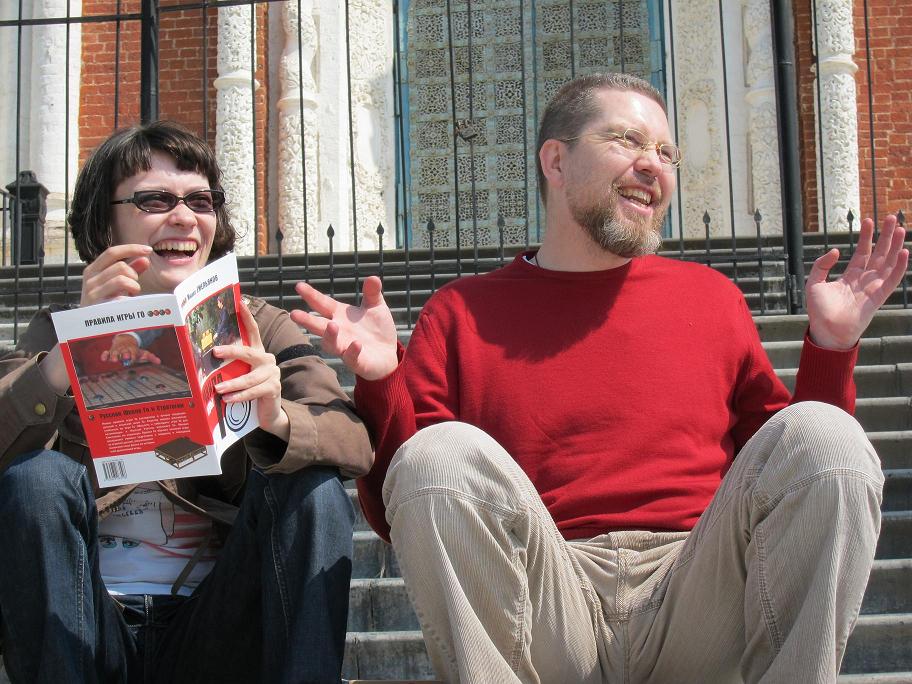
Igor Grishin and Irina Chukomina in Ryazan Kremlin.
And after it Igor said a few words about the expedition and Go to local journalists.
The 5-th of May. Penza. It is a real Russian town. We could not find any Go players there when made up the plan of the trip. But the expedition was met by the local ministry of tourism. It was a very useful meeting because Igor Grishin asked them about the route. There expedition visited the memorial of the Unknown Warrior.
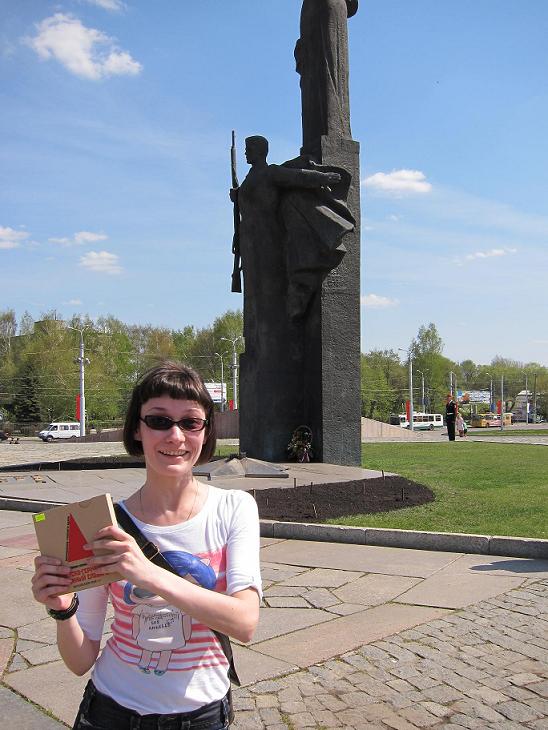
With Soviet-German War Vocabulary near memorial of Unknown Warrior in Penza.
After that Igor Grishin visited the museum of Russian writer Radischev. The Museum is located in his house. He wrote the famous critical essay “The Journey from Petersburg to Moscow” about corruption and difficult life of common people in Russia (it was the time of Catherine the Great). After the publication of this book the Empress banished him to Siberia.
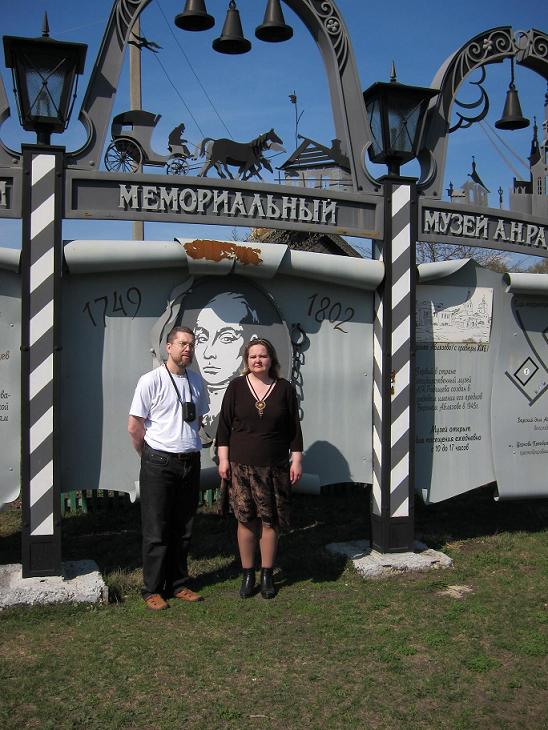
Igor Grishin and the director of Radischev museum
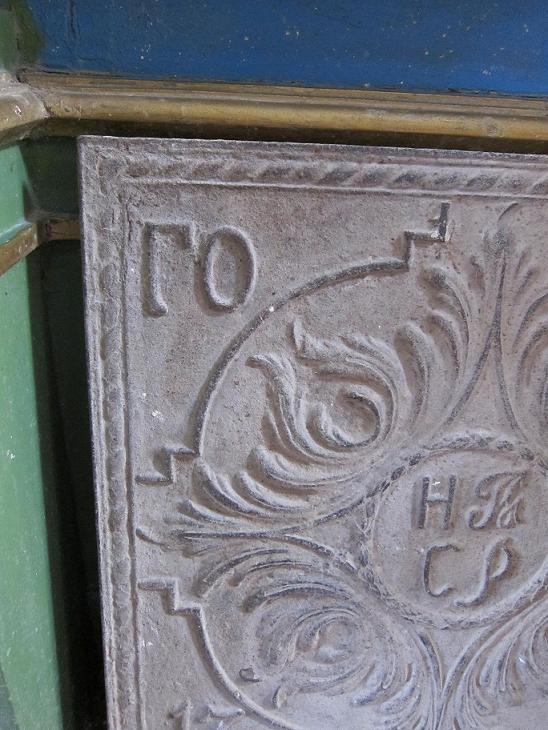
“GO” at the left top corner on the plate.
Here is an interesting photo from museum. Here – the family plate with two letters – ГО – Go in Russian. What does it mean? I don’t understand. I think Igor Grishin will explain it when he returns to Moscow.
The 6-th of May. Tolyatti. This town is located near another big city – Samara, and is famous as a Russian automobile industry center. We visited Tolyatti several times before, because there is a big children educational center here. It specializes on teaching Wushu, martial arts. And from 2007 there is a Go education program here. During our first visit (I took part too) we presented a lot of Go game sets and books. The center director Artem Marchenko is the president of The Go Federation of Samara region. He compiled a big program for Igor Grishin including lectures, presentations and workshops.
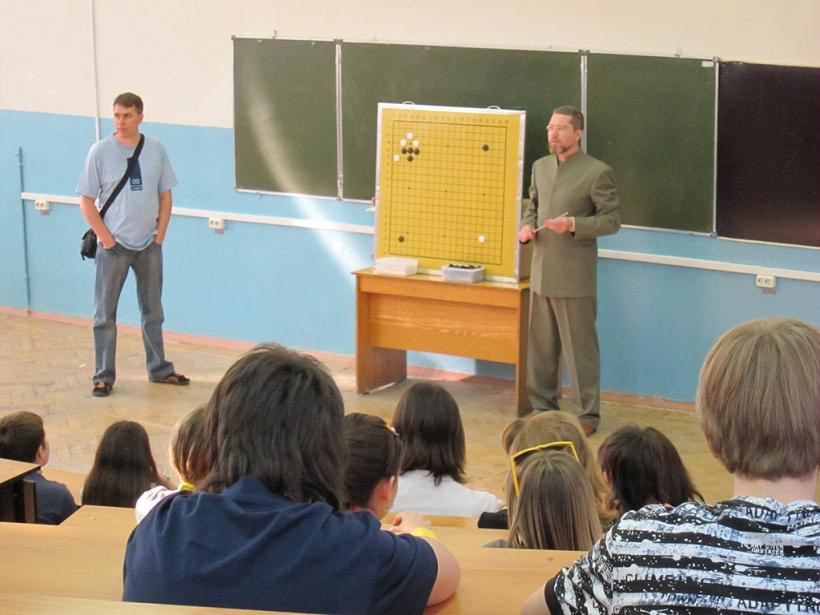

lecture for youth in Tolyatti Government University “The Go game Subtlety”.
The 7-th of May. Samara. In Samara Maksimilian Yatskar and Aleksey Kurochkin are the leaders of Go. Thanks to them the lectures, seminars, tournaments are conducted in the city. Our federation help them with advice, books and sets.
Igor Grishin at the meeting with the children from Go section
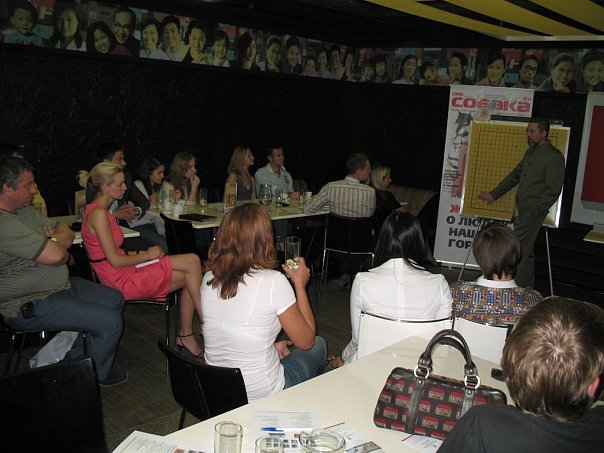
Igor Grishin’s workshop about Strategy for business-club “Altera Pars”
In Samara Igor Grishin had a lecture in Samara Government Aerospace University, lecture about Strategy for “Altera Pars” club, workshop for students’ club “Thought flight” and meeting with the children from Go section in sport club “Rook”.
Tolyatti and Samara are the most dynamically evolving Go centers in Russia. It is a huge social movement that grows without outside support. I think that in future Samara will be a strong Go game center, that will attract the best Russian young people to Go. The expedition spent 5 days in Tolyatti and Samara.

